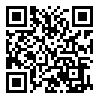<>
Volume 7, Issue 4 (11-2024)
JSAL 2024, 7(4): 23-43 |
Back to browse issues page
Download citation:
BibTeX | RIS | EndNote | Medlars | ProCite | Reference Manager | RefWorks
Send citation to:



BibTeX | RIS | EndNote | Medlars | ProCite | Reference Manager | RefWorks
Send citation to:
Salehi P, Sobati E. (2024). The Study of Narratological Structure of the Story of Prophet Abraham (AS) in the Holy Quran Using the Model of Greimas [In English]. JSAL. 7(4), 23-43.
URL: http://jsal.ierf.ir/article-1-171-en.html
URL: http://jsal.ierf.ir/article-1-171-en.html
1- Professor, Department of Arabic Language and literature, Faculty of Literature and Humanities, Ilam University, Ilam, Iran
2- Assistant Professor, Department of English Language, Faculty of Literature and Humanities, Ilam University, Ilam, Iran ,e.sobati@ilam.ac.ir
2- Assistant Professor, Department of English Language, Faculty of Literature and Humanities, Ilam University, Ilam, Iran ,
Abstract: (1741 Views)
In Greimas narrative model, the basic structure of narrative construction in the form of action pattern, propositions and narrative chains is analyzed in order to identify the stages of production to receive meaning. Considering that the knowledge of the mechanisms of meaning production in the narrations of the Holy Quran is of special importance, the focus of the current study is to determine the degree to which the Grimas pattern aligns with the verses of this revered Surah. To achieve this objective, the narrative framework of the story of Prophet Abraham (PBUH) has been examined through a descriptive-analytical approach, utilizing Grimas's structural model. The results show that Greimas’s structural pattern matches the story, and such a comparison with contemporary storytelling theories is one of the miraculous aspects of a book which has been revealed for centuries. Another noteworthy point is that sometimes the main character of the story plays different roles of subject, receiver, sender and even helper. In some situations, there are relationships of contradictions and differences between subjects. It is in the shadow of understanding these contrasts that one can understand the structure of the text and through using three syntagmes of contractual, performative, and disjunctive can covers abstract concepts and inanimate objects in addition to characters.
Type of Study: Research |
Subject:
Linguistic research
Received: 2024/10/14 | Accepted: 2024/11/30 | Published: 2024/11/30
Received: 2024/10/14 | Accepted: 2024/11/30 | Published: 2024/11/30
References
1. Holy Qur'an
2. Ahmadi, B., (2009). The Text-Structure and Textural Interpretation. 11th Edition. Tehran: Center.
3. Ashrafi B, Taki G, Behnamfar M. (2015) "The Analysis of Joseph Story in The Quran according to Propp's and Greimas' Approaches". Language Related Research, 6 (7): pp. 33-52.
4. Ashrieh, R., Seyyed Mohammad Mousavi; M., (2017). "Studying the childhood story of Prophet Moses (PBUH) in Surah Al-Qasas based on the Grimas narrative model". Research Journal of Quranic Studies, Vol. 8, No. 31, pp. 183-203.
5. Beiranvand, N., Arian, H., Kazem Khanloo, N., (2016). "Narrativization of the story of Elf Aqvan (Aqvqne dive)". Specialized quarterly for the analysis and criticism of Persian language and literature texts, Vol. 21. pp. 98-127.
6. Eagleton, T., (2001). An Introduction to Literary Theory, translated by Abbas Mokhbar, Tehran: Markaz.
7. Forster, Edward Morgan. (2005). Aspects of the novel. Translated by Ebrahim Younesi. 5th Edition, Tehran: Negah.
8. Gheisari, H,. feghhi zadeh, A,. (2019). "Stretching the "science" in the light of semantics of the "people who Understand" in Sura Fussilat (Based on the semantics of Grimes)". Quran and Hadith Studies, 12(2), pp. 23-44.
9. Greimas, A. J. (1966). Structural semantics: An attempt at a method. Lincoln, NE: University of Nebraska Press.
10. Haqbin, F., Bidadian, F,. (2013). "A study of the semantics of verses related to the resurrection and resurrection from Surah Al-Qiyamah based on Grimas' semiotic studies". Quarterly Journal of Linguistics, Vol. 4, No. 2, (8th issue), pp. 51-74.
11. Hébert, L,. Tabler, J. (2020). An introduction to applied semiotics: Tools for text and image analysis. Routledge. [DOI:10.4324/9780429329807]
12. Hosseinpoor Sarkarizi, A., Alavi Moghaddam, M. and Firoozi Moghaddam, M. (2019). "Analysis of the narrative structure and Discourse Action of the Novel Symphony of the Deads based on Greimas 'Theory of Narrative Semiotics of Paris School". Journal of Literary Criticism, 3(6), pp. 81-55.
13. Makarm Shirazi, N., (1998). The Ideal Commentary, 32th Edition. Tehran: Islamic Books House.
14. Makaryk, Irena Rima. (1995). Encyclopedia of Contemporary Literary Theory: Approaches,
15. Mashhadi, M., (2014). "Analysis of the narrative structure of the story of Bahram and Golandam based on Grimas theory". Literary Text Studies, Vol. 81, No. 68, pp. 84-105.
16. Okhovat, A., (1992). on Literature: The Grammar of Story. Esfahan: Farda Publisher.
17. Propp, V., (1958). Morphology of the Fairy Tales. University of Texas Press, Austin, Texas, 2th edition. English translation of (Propp, 1928).
18. Rewaj, J., (2003). Structuralism and semiotics. 2th edition. Taylor and Francis group: London and New York.
19. Scholes, Robert E., (1974). Structuralism in Literature: An Introduction. New Haven and London: Yale University Press.
20. Sedghi, H., Ganjkhnlou, F., (2016). "An Analysis of the Narrative Structure of the Story of Prophet Sulaiman (AS) and Queen of Saba Based on Greimas's Narrative Model". Literary Quranic Researches, 4(3), pp. 23-46.
21. Shairi, H., (2012). Fundamentals of Modern Semantics. Tehran: Samt.
22. Younesi, E., (2009). The Art of Storytelling. 10th edition, Tehran: Negah.
Send email to the article author
| Rights and permissions | |
 |
This work is licensed under a Creative Commons Attribution-NonCommercial 4.0 International License. |







